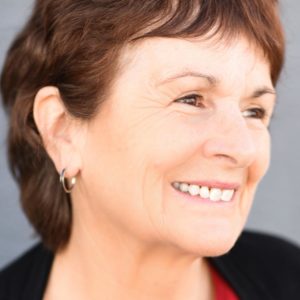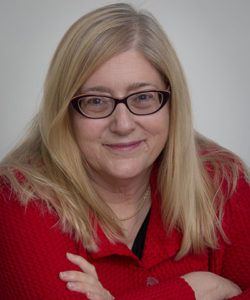No Longer Invisible: Empowered After Fifty
When in my early sixties, I sensed something had shifted—I felt like people ignored me more often. When I went shopping, I noticed it became harder to get salespeople’s attention; sometimes, they acted like they couldn’t see me. I felt demeaned when a dental assistant referred to me as “sweetie” while putting her hand on my lower back as though guiding me toward an examination room. Other times, people would talk over me at work. I started feeling invisible. At first, I didn’t understand why people were treating me differently—I was the same person I’d always been—only better in many ways. I started to wonder if I was experiencing age discrimination (ageism).
The Intersection of Sexism and Ageism
I began reading everything I could find about age discrimination and started gaining an increased sense of awareness. But I still felt like the articles and books I was exploring didn’t address what many of my women friends and I were experiencing.
As I started talking to more women, examining research, and reading articles or posts by older women about their experiences, I began to realize something Stella Fosse writes about and understands very well; older women are often confronted with both sexism and ageism.
A 2017 Pew research report revealed that women in our culture are primarily valued based on appearance, compared to men, who are valued more for their character. Once we start losing our physical appeal, we are perceived as having less value. Also, in a youth-centric culture, the devaluing of people based on age is well-documented. For women, this means we often experience what is commonly referred to as “double jeopardy;” as a result, it is more common for older women to increasingly feel invisible and often powerless to do anything about it. Yet, as Stella knows, we have powerful choices we can make to live our best lives now and in the future.
Authors of an article in The Lancet, a well-known medical journal, suggest the current literature and research on ageism have not sufficiently dealt with the intersection of sexism and ageism. “It is important that we go beyond that single label to consider the neglected and pervasive impact of gendered ageism.”
A Mission and a First Book
In 2019, I became a woman on a mission: I felt compelled to share what I was learning about gendered ageism and related feelings of invisibility. I also wanted to offer empowerment strategies we can use as we move into our 50s, 60s, 70s, and beyond; this prompted me to write my first book, Refusing to Be Invisible: Life Planning Empowerment Strategies for Women 50+.
Gendered Ageism and Relevant Empowerment Strategies
Stella graciously invited me to share information about my book, and I am pleased to do so. My first chapter addresses gendered ageism and why it is essential to recognize and understand it. I also ask readers to consider, “Whose interests are being served when advertisers and media help create disdain for women who show signs of aging?”
Communication Empowerment Strategies
Drawing from my background in communication, I offer strategies in the first few chapters that we can start using to be heard and seen whenever it suits us. For example, readers will learn how we can use stories about ourselves and other older women to feel more empowered and to help reframe how others see us. Also, I explain how we can use nonverbal communication, such as how we can use our posture and stance to communicate power and presence. The two subsequent chapters examine ways we can use communication empowerment strategies in the workplace and healthcare settings.
Empowerment Strategies for Specific Life Areas
Other chapters from Refusing to Be Invisible offer specific empowerment strategies such as life transitions, our mindsets, and how we care for our bodies and finances. One of Stella’s recent posts addresses the disadvantage many women—especially older women—face regarding personal finances. The two chapters I offer on finances extend the discussion and how we can feel more confident about our financial matters.
In another chapter, I draw on my training as a certified professional retirement coach to offer a practical guide for the nonfinancial planning aspects of retirement. In my research and training, I learned that many people are more likely to plan for their vacations than they are likely to plan for the non-financial aspects of retirement. To avoid the boredom that too many women experience after the first couple of post-career years, it is essential that we have a plan before we choose (or are forced to) retire.
Empowerment Strategies for Widowhood and Beyond
I became a widow in May 2022 while writing my book. Using my own experience and drawing on relevant literature, one of my last chapters is about widowhood. In this chapter, I discuss the many tasks of new widows and the grief process. I also share how we can increasingly feel empowered through widowhood and discover new strengths.
The final chapter in my book is about having a sense of purpose. If you live with purpose, you can become an invincible force. My purpose is to encourage and help others feel empowered to live their best lives at every age. My purpose gives me the strength to continue living my best life. At the age of nearly 71, I published my first book as part of my life purpose.
A Book with Many Voices
While writing Refusing to Be Invisible, I drew from evidence-based research, women’s stories, and my own experiences and background as a retired associate professor of communication. As I was writing, my late husband and some of my women friends read what I was writing and gave me a lot of feedback; the process was very collaborative (and brain-draining at times). After my book was ready to publish, I asked appropriate people to review my work and provide an endorsement. Stella Fosse’s endorsement is on the back cover of my book. Thank you, Stella, for all your support.
Paula’s book, Refusing to Be Invisible: Life Planning Empowerment Strategies for Women 50+, is available through Amazon.


